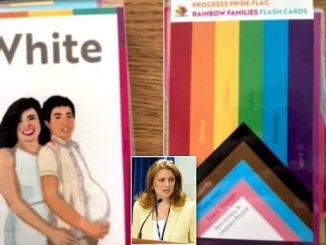
A new Pew Research Center study shows that almost 2% of U.S. adults self-report that they are ” transgender or nonbinary .” Among those aged 18 to 29, this number jumps to roughly 5%, with 2% identifying as a transgender woman or transgender man and 3% identifying as “nonbinary.”
Moreover, 20% of Americans say they personally know someone who is nonbinary. This is more common, as you can imagine, among younger adults with higher levels of education who live in urban areas and are Democrats.
I don’t believe these numbers reflect the true percentage of people in society who are transgender. If anything, they are further evidence of the trendiness and pervasiveness of gender ideology today. As my readers know, there is zero scientific evidence supporting the idea of nonbinary genders. There are two sexes and two genders, and transgender people simply identify as the opposite sex as opposed to their birth sex.
I’ve written previously about the rise in LGBT+ self-identification among Generation Z, with approximately 1 in 5 identifying this way. Young people are particularly incentivized to claim they are transgender or a gender other than male or female, especially if they are white or heterosexual, because it lends them credibility on the intersectionality scale. Latching on to some form of minority status, no matter how frivolously, allows a person to switch sides from being considered a genocidal oppressor to an oppressed ally.
The best part about “nonbinary” or “genderfluid” identities is they are easily adopted, and no one is allowed to question their validity. For those who are looking to score sympathy points or gain social capital, third-gender identities are a relatively easy way to opt in. The fact that a larger percentage of 18- to 29-year-olds say they are “nonbinary” than transgender speaks to this. I can’t say I’m surprised that more time spent within the halls of academia is associated with a deeper familiarity with this ideology. It’s also one thing if adults choose to endorse beliefs untethered to reality.
But, most disturbingly, about 1 in 10 people surveyed said they know a child under the age of 18 who identifies as transgender. This is not a rarity affecting only a small subset of the population anymore — it’s taken hold of an entire generation of children. Considering the high rates of desistence and rapid-onset gender dysphoria, this won’t end well.
* Article from: The Washington Examiner


